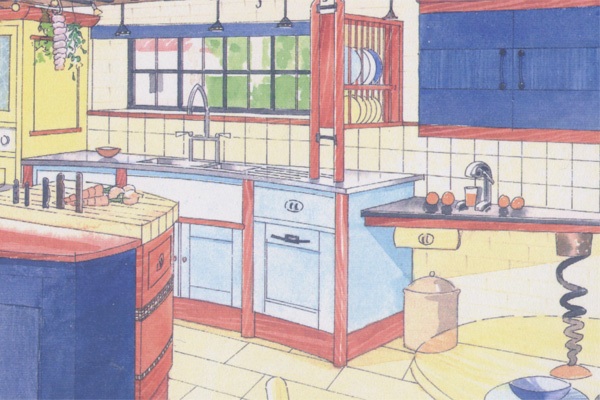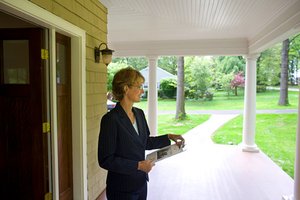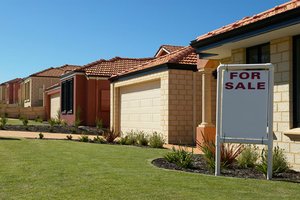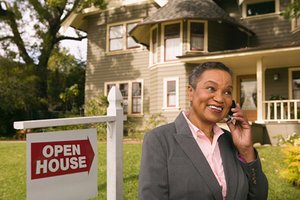Homeownership should make you feel safe
and secure, and that includes financially. Be sure you can afford your
home by calculating how much of a mortgage you can safely fit into your
budget.
Instead of just taking out the biggest mortgage a lender qualifies you to borrow, consider how much you want to pay each month for housing based on your financial and personal goals.
Think ahead to major life events and consider how those might influence your budget. Do you want to return to school for an advanced degree? Will a new child add day care to your monthly expenses? Does a relative plan to eventually live with you and contribute to the mortgage?
Still not sure how much you can afford? You can use the same formulas that most lenders use, or try another of these traditional methods for estimating the amount of mortgage you can afford.
To understand how that rule applies to your particular financial situation, prepare a family budget and list all the costs of homeownership, like property taxes, insurance, maintenance, utilities, and community association fees, if applicable, as well as costs specific to your family, such as day care costs.
The lower your downpayment, the higher the loan amount you’ll need to qualify for and the higher your monthly mortgage payment.
Here’s how that works. If your gross annual income is $100,000, multiply by 28% and then divide by 12 months to arrive at a monthly mortgage payment of $2,333 or less. Next, check the total of all your monthly bills including your potential mortgage and make sure they don’t top 41%, or $3,416 in our example.
Here’s an example. If you currently pay $1,500 per month in rent, you should be able to comfortably afford a $2,000 monthly mortgage payment after factoring in the tax benefits of homeownership.
However, if you’re struggling to keep up with your rent, consider what amount would be comfortable and use that for the calcuation instead.
Also consider whether or not you’ll itemize your deductions. If you take the standard deduction, you can’t also deduct mortgage interest payments. Talking to a tax adviser, or using a tax software program to do a “what if” tax return, can help you see your tax situation more clearly.
Instead of just taking out the biggest mortgage a lender qualifies you to borrow, consider how much you want to pay each month for housing based on your financial and personal goals.
Think ahead to major life events and consider how those might influence your budget. Do you want to return to school for an advanced degree? Will a new child add day care to your monthly expenses? Does a relative plan to eventually live with you and contribute to the mortgage?
Still not sure how much you can afford? You can use the same formulas that most lenders use, or try another of these traditional methods for estimating the amount of mortgage you can afford.
1. The general rule of mortgage affordability
As a rule of thumb, you can typically afford a home priced two to three times your gross income. If you earn $100,000, you can typically afford a home between $200,000 and $300,000.To understand how that rule applies to your particular financial situation, prepare a family budget and list all the costs of homeownership, like property taxes, insurance, maintenance, utilities, and community association fees, if applicable, as well as costs specific to your family, such as day care costs.
2. Factor in your downpayment
How much money do you have for a downpayment? The higher your downpayment, the lower your monthly payments will be. If you put down at least 20% of the home’s cost, you may not have to get private mortgage insurance, which costs hundreds each month. That leaves more money for your mortgage payment.The lower your downpayment, the higher the loan amount you’ll need to qualify for and the higher your monthly mortgage payment.
3. Consider your overall debt
Lenders generally follow the 28/41 rule. Your monthly mortgage payments covering your home loan principal, interest, taxes, and insurance shouldn’t total more than 28% of your gross annual income. Your overall monthly payments for your mortgage plus all your other bills, like car loans, utilities, and credit cards, shouldn’t exceed 41% of your gross annual income.Here’s how that works. If your gross annual income is $100,000, multiply by 28% and then divide by 12 months to arrive at a monthly mortgage payment of $2,333 or less. Next, check the total of all your monthly bills including your potential mortgage and make sure they don’t top 41%, or $3,416 in our example.
4. Use your rent as a mortgage guide
The tax benefits of homeownership generally allow you to afford a mortgage payment—including taxes and insurance—of about one-third more than your current rent payment without changing your lifestyle. So you can multiply your current rent by 1.33 to arrive at a rough estimate of a mortgage payment.Here’s an example. If you currently pay $1,500 per month in rent, you should be able to comfortably afford a $2,000 monthly mortgage payment after factoring in the tax benefits of homeownership.
However, if you’re struggling to keep up with your rent, consider what amount would be comfortable and use that for the calcuation instead.
Also consider whether or not you’ll itemize your deductions. If you take the standard deduction, you can’t also deduct mortgage interest payments. Talking to a tax adviser, or using a tax software program to do a “what if” tax return, can help you see your tax situation more clearly.
Read more: http://buyandsell.houselogic.com/articles/4-tips-determine-how-much-mortgage-you-can-afford/#ixzz21y94aNoj


 Homeowners associations have broad legal powers to collect fines and fees and regulate activities. Image: Towne Properties
Homeowners associations have broad legal powers to collect fines and fees and regulate activities. Image: Towne Properties When looking for your new house, make sure to take into consideration how long you plan to stay there. Image: Thinkstock Images/Comstock/Getty Images
When looking for your new house, make sure to take into consideration how long you plan to stay there. Image: Thinkstock Images/Comstock/Getty Images
 If you think the appraisal value of your home is too low, you can seek a second opinion. Image: David Sacks/Lifesize/Getty Images
If you think the appraisal value of your home is too low, you can seek a second opinion. Image: David Sacks/Lifesize/Getty Images A house is comparable to yours in price if it's in the same neighborhood, on a similar street, and in the same school district. Image: image100 Photography/Veer
A house is comparable to yours in price if it's in the same neighborhood, on a similar street, and in the same school district. Image: image100 Photography/Veer Before attending a foreclosure auction, learn the rules for your area. Several processes are set by individual state and local governments. Image: Comstock Images/Getty Images
Before attending a foreclosure auction, learn the rules for your area. Several processes are set by individual state and local governments. Image: Comstock Images/Getty Images Warm, neutral-colored paint is key when staging your home. Image: Radius Images/Getty Images
Warm, neutral-colored paint is key when staging your home. Image: Radius Images/Getty Images After you've done everything you can to make your home appealing to buyers, get out of there and let your REALTOR® sell it. Image: Brand X Pictures/Getty Images
After you've done everything you can to make your home appealing to buyers, get out of there and let your REALTOR® sell it. Image: Brand X Pictures/Getty Images When negotiating a house sale, for every concession you make, ask for something in return. Image: Westend61/Getty Images
When negotiating a house sale, for every concession you make, ask for something in return. Image: Westend61/Getty Images
 Adding new energy-efficient windows can pay off at resale, as well as boost your energy savings. Image: Marvin Windows and Doors
Adding new energy-efficient windows can pay off at resale, as well as boost your energy savings. Image: Marvin Windows and Doors
 If a plant is the focal point of your yard, water it first. Image:
If a plant is the focal point of your yard, water it first. Image: